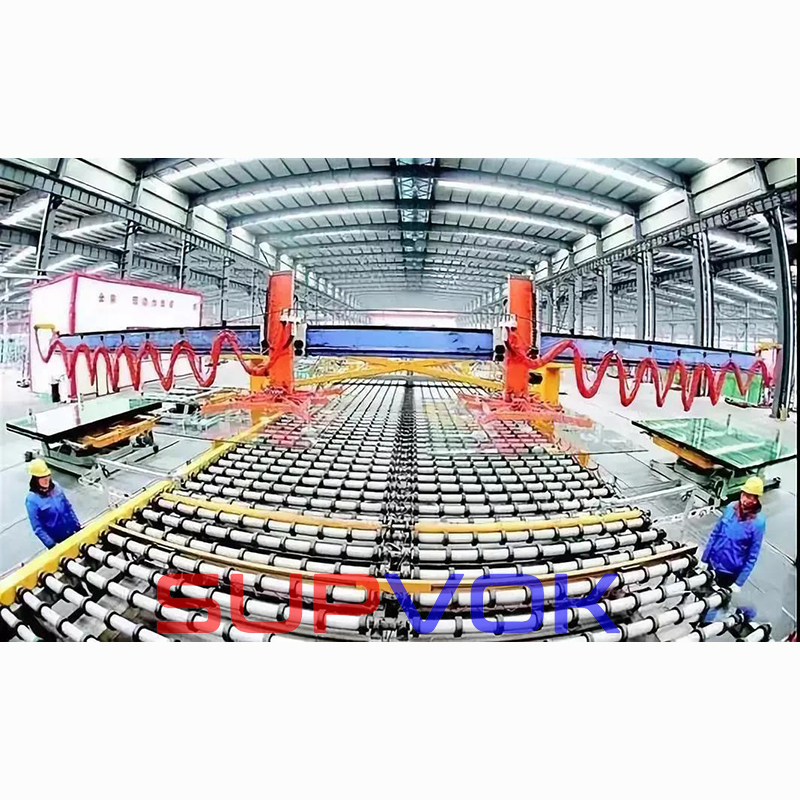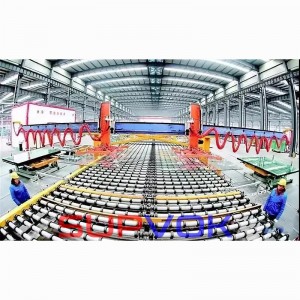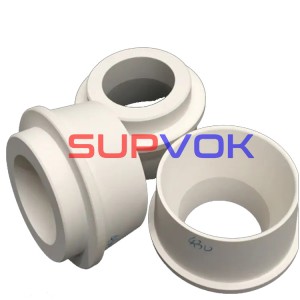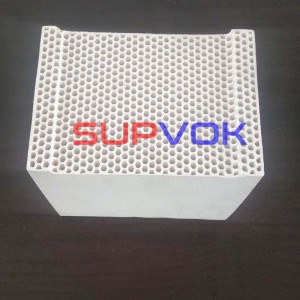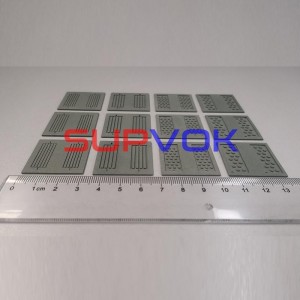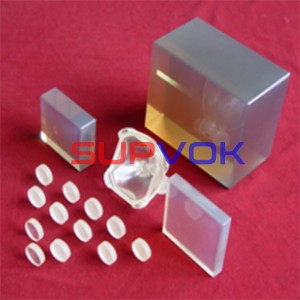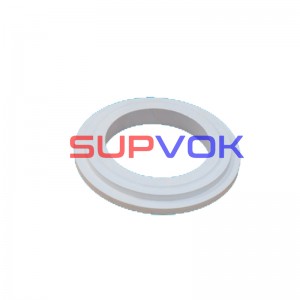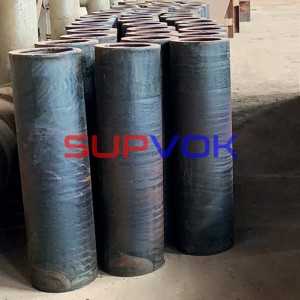Others Wear-resistant and Corrosion-resistant Ceramics
Details
The core of wear-resistant and corrosion-resistant industries is the application of new materials and technologies in related industries. It mainly includes thermal spraying, surfacing and wear-resistant plate, laser cladding, wear-resistant ceramic technology, corrosion-resistant and wear-resistant coating technology, corrosion-resistant technology, wear-resistant material technology, etc.
Wear-resistant and corrosion-resistant industries is a branch of surface treatment industry. It is an emerging industry for preventive care and remanufacturing technology services in order to solve the wear and corrosion problems of equipment and workpieces in power, steel, chemical mining, cement and other industries. wear-resistant and corrosion-resistant industry has strong vitality. Through the wear and corrosion protection of industrial equipment, its service life can be greatly improved, and the consumption of steel and other materials caused by its maintenance or replacement can be reduced to save resources. The wear-resistant and corrosion-resistant industries are important measure to save resources, protect environment and promote circular economy. They are also powerful assistant for enterprise to achieve energy saving, emission and cost reduction, and economic efficiency improvement. The wear-resistant and corrosion-resistant industries have the characteristics of cross cutting, marginal and multidisciplinary.
Corrosion Wear problems widely exist in the mechanical equipment of petroleum, chemical industry, coal mine, electric power, metallurgy and other industrial fields, which is one of the main reasons for material loss and equipment failure. It is reported that the United States has about 230000 tons of steel every year. Only focusing on the mineral processing equipment in the world, there are 450000 tons of steel damaged by corrosion and wear. it is undoubtedly a huge economic loss to consider the corrosion and wear of other industrial sectors together.
1.Definition and classification of Corrosion Wear
Corrosion Wear refers to the material loss phenomenon caused by chemical or electrochemical reaction between the surface material and the surrounding medium, accompanied by mechanical action, during the relative sliding process of the dual surface of the friction pair. In actual working conditions, Corrosion Wear is often limited by material factors, electrochemical factors, mechanical factors and environmental factors.
•Material factors: material composition, microstructure, mechanical properties, physical and chemical properties, etc;
•Electrochemical factors: type, concentration, pH value, etc. of corrosive medium;
•Mechanical factors: load, speed, etc;
•Environmental factors: temperature, pressure, etc;
Corrosion Wear performance is quite different from that of pure corrosion and pure wear.
According to the different corrosion media, corrosion wear can be divided into chemical corrosion wear and electrochemical corrosion wear.
Chemical corrosion wear
In gas medium, the corrosion wear is mainly oxidation wear. It mainly refers to the process in which the metal surface reacts with the gas medium, forms an oxide film on the surface, and then is removed under the action of abrasive or micro convex. According to the different mechanical properties of the films, there are two main types of oxidation wear models: brittle oxidation wear model and ductile oxidation wear model.
Electrochemical Corrosion Wear
Due to many factors involved, electrochemical corrosion wear is a more complex process than oxidation wear. According to the characteristics of material removal in electrochemical corrosion wear process, mechanical removal model and corrosion removal model have been proposed.
2.Mechanism of Corrosion Wear
The research on mechanism of metal Corrosion Wear has always been the focus of controversy. Mechanical removal model of surface film and hydrogen induced wear theory were proposed in the early days. They can not explain various problems in the loss form of corrosive wear materials. Laterly, the research of corrosion wear mechanism focused on the performance, repair and regeneration rate of metal surface film. However, in fact, the electrochemical research results of surface film damage and repair can not satisfactorily explain various problems of corrosion wear. A large number of experiments and engineering practices have gradually made people realize that the core of corrosion wear research should be the interaction between corrosion and wear (synergistic effect), rather than the behavior of surface film.
3.Prevention and control methods for metal corrosion wear
What is more important is how to control corrosion wear and reduce material loss during service in order to prolong the service life of the workpiece.
According to the failure characteristics of corrosive wear, effective methods for controlling corrosive wear can be divided into the following categories:
1) Selecting materials with good wear resistance: It is the most effective method to control corrosion wear.
2) Reasonable design: reducing flow rate, increasing material thickness etc in order reduce the corrosion and wear level of materials.
3) Changing the environment: adding buffer, reducing temperature, removing sediment, etc
Adding corrosion inhibitor to the corrosion medium can form a dense film on the metal surface to isolate the metal body from the corrosion medium, so as to protect the metal and prevent corrosion. It can also form thick lubricating film on metal surface and friction pair surface, which not only plays a role in lubrication, but also slows down metal wear, with good bearing capacity and fast repair speed.
4) Surface treatment
It is well known that the surface modification of materials can significantly improve the wear resistance and corrosion resistance of materials. Therefore, it is bound to improve the corrosion resistance and wear resistance of materials. There are some methods to greatly improve the corrosion and wear resistance of the metal, such as electroless Ni-P alloy plating on metal surface, Carbonitriding, Vapour Deposition of TiN Superhard Film, and so on.
5) Electrochemical protection
The key of anodic protection is not only to make the metal surface passive, but also to maintain the passive state. Otherwise, it can not only protect the metal, but also accelerate the corrosion of the metal. In the corrosive wear system, the impact of debris particles or fluid flow or the friction effect of friction pairs. In general, the passive film on the metal surface will break and fall off, and the passivity cannot be maintained. Therefore, anodic protection method should not be used in corrosive wear system.
Corrosion wear material loss includes corrosion and wear components. In addition, if the corrosion component is controlled by cathodic protection, the acceleration of corrosion on wear will be reduced. Therefore, the loss of materials will be greatly reduced.
As a common form of wear in modern industrial production, corrosion wear has been paid more and more attention by various industrial departments. The research on this special wear form is developing in both breadth and depth. In the future, its research work will mainly include the following aspects:
(1) Further strengthen the study of corrosion wear mechanism;
(2) Develop more mature corrosion wear test equipment with more extensive application and more stable performance as soon as possible;
(3) According to the specific corrosion environment, select reasonable materials and heat treatment processes; study the relationship between material selection and corrosion wear; and the relationship between material heat treatment process selection and corrosion wear;
(4) Deeply study the mechanism of improving corrosion wear resistance by using surface modified layer;





